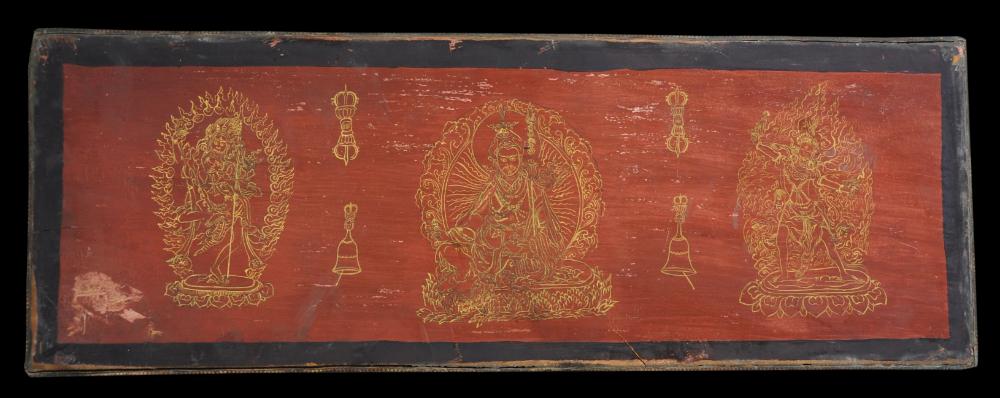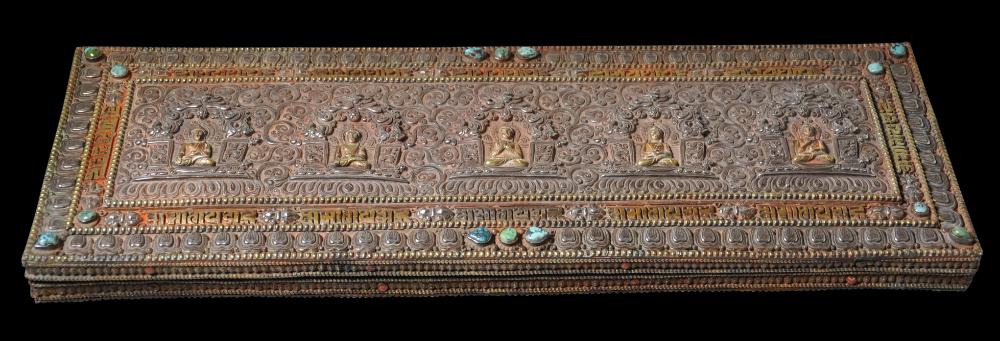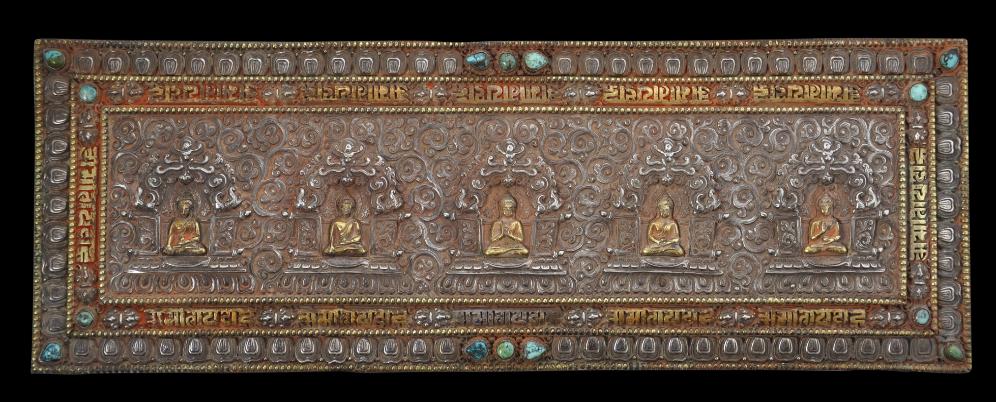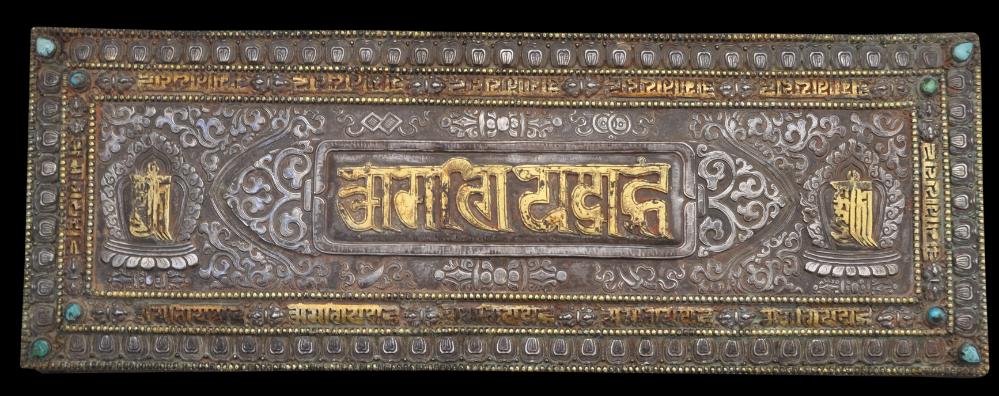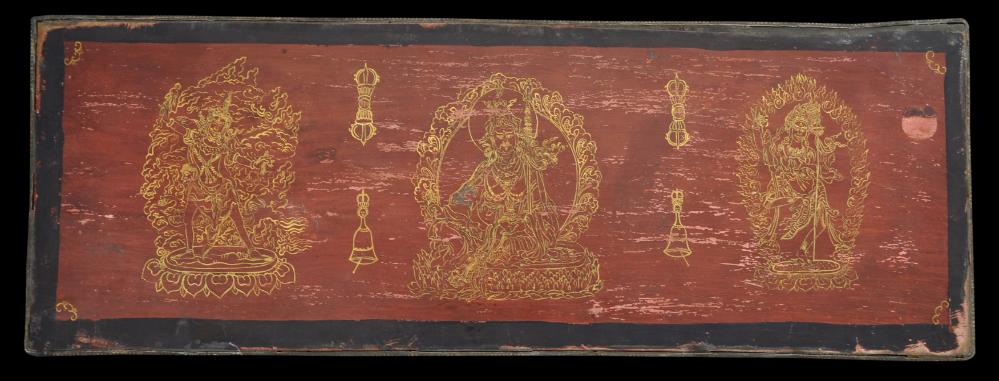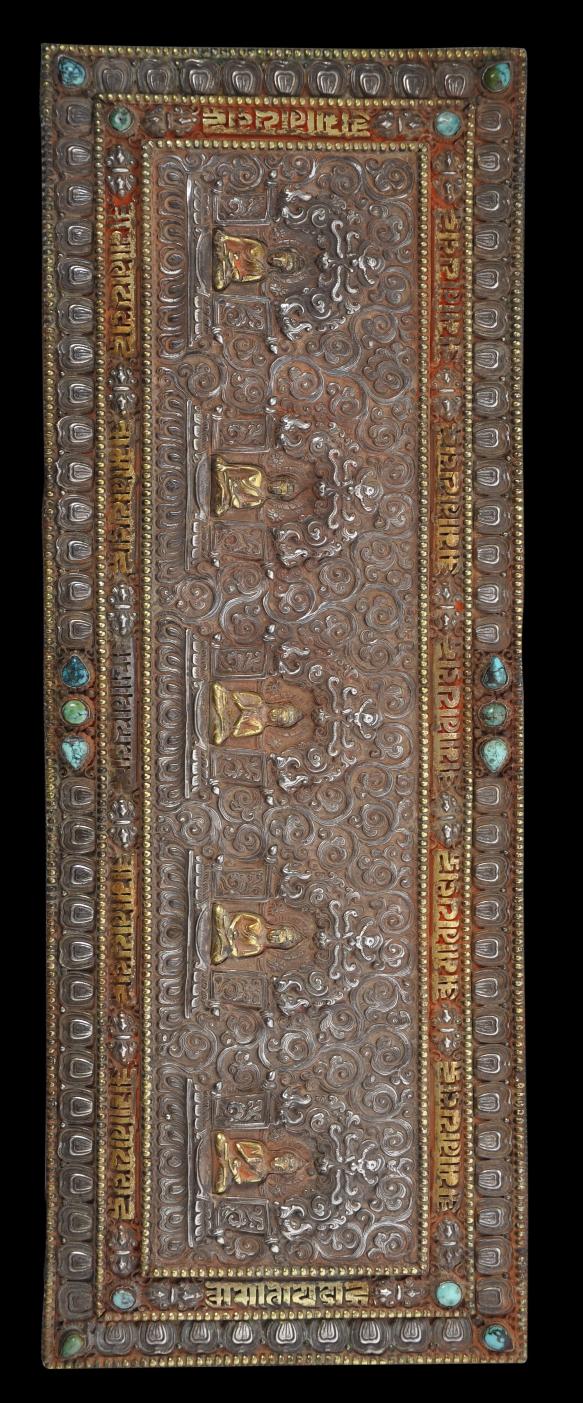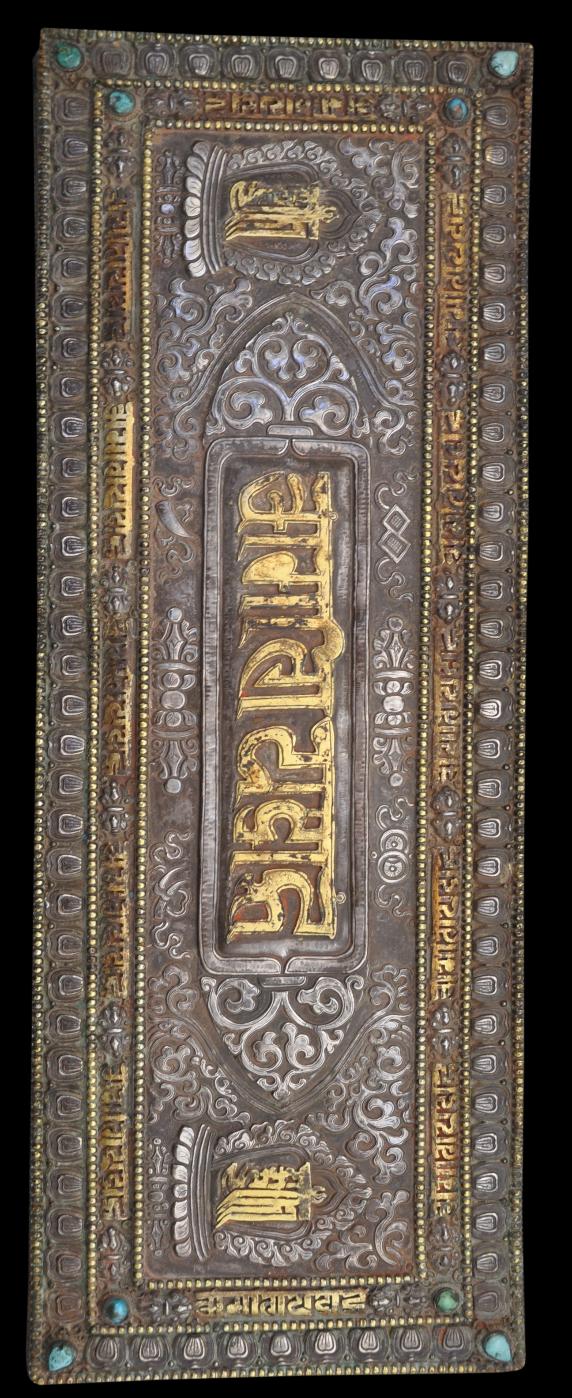Tibetan Sutra Covers
Pair of Wooden Sutra Covers Clad in Parcel-Gilt, Repoussed Silver inset with Turquoise & Coral
Tibet
18th-19th century
length: 45.5cm, width: 15.5cm
This set of Tibetan manuscript covers comprises a matching top and bottom cover. The covers are made of wood, but the outward-facing sides are clad entirely in repoussed sheet silver which has been parcel gilded (partly gold plated) and set with turquoise cabochons. The edges have also been set with small coral cabochons.
One cover is repoussed with the five Cosmic Buddhas – Ratnasambhava making the gesture of generosity, Akshobya touching the earth with his right hand, Vairochana making the gesture of preaching, Amitabha with hands folded in meditation, and Amoghasiddhi making the gesture of protection. They are portrayed in niches separated by finely Himalayan scrollwork and within a rectangular border of gilded
lantsa script, after which there are broad borders decorated with lotus petals in high relief and set with turquoise cabochons. The edges are of pearled silver wire.
The other cover is decorated with a central panel of gilded
lantsa script. On either side is a stylised kalachakra ideogram (the kalachakra is composed of ten powerful mantra syllables) on a lotus petal platform. Himalayan vegetal scrolling fills the spaces between these elements along with dorje motifs and several Himalayan Buddhistic motifs. This is all contained within a rectangular, gilded border of lantsa script, and then a border of lotus petals. The borders are inlaid with turquoise cabochons.
The interior faces are of wood lacquered with cinnabar-red within black borders and decorated in gold with deities,
dorje symbols Tibetan bell symbols.
The covers are unusual being metal-clad as they are, but there are precedents. It is possible that the covers are from the more Tibetan parts of Nepal, such as Mustang. Indeed, Matthiessen (1996, p. 136) illustrates some covers, partly clad in partly-gilded silver with repousse work that is not unlike that shown on the covers here. Matthiessen says that the Mustang covers were commissioned in the 15th century and that originally there were 108 volumes which were kept in the Raja of Mustang’s private chapel in Lo Monthang but that over the centuries many disappeared. It is likely that replacements were commissioned over the centuries.
Other examples of Himalayan and Mongolian wooden manuscript covers with part or full exterior silver cladding are illustrated in Pal (2001, p. 193), Tsultem (1987, ill. 58), and Topsfield (2013, 84).
Heller (2000, p. 63) illustrates a book cover clad in gilded copper repoussed with the five Cosmic Buddhas and attributed to 11th-12th century Nepal, probably for a Tibetan patron, and Pal (1990, p. 115) illustrates a cover covered in gilded bronze featuring the five Cosmic Buddhas, inlaid with stones, and attributed to around 1600.
The styling of the repousse work (though not the motifs) and the parcel gilding also has some similarities with that on a ritual box clad in repoussed sheet silver and ascribed to 18th century Tibet which is illustrated in Pal (2001, p. 321).
The silverwork on both covers has a lot of what appears to be
sindoor or vermillon (Tb.: li-khri) powder in and around the crevices. Vermilion powder is important to Tibetan Buddhism as well as Hinduism where it more typically encountered. A Brahmin astrologer called Jyotisharaja, is said to have presented vermilion to the Buddha. It was later used by Hindus and Buddhists as an offering.
One of the covers has remnants of a wax seal, possibly an export seal, on the inside. But both are intact with few losses and are in a fine stable condition. There is some flaking to the red lacquer that has been applied to the insides of the covers and some minor losses (and possible replacements) to some of the inlaid stones. Both covers are particularly decorative.
References
Beer, R., The Encyclopedia of Tibetan Symbols and Motifs, Serindia, 2004.
Heller, A.,
Tibetan Art: Tracing the Development of Spiritual Ideals and Art in Tibet, 600-2000AD, Jaca Books, 2000.
Matthiessen, P.,
East of Lo Monthang: In the Land of Mustang, Shambhala, 1996.
Pal, P.,
Art of Tibet, Los Angeles County Museum of Art, 1990.
Pal, P.,
Desire and Devotion: Art from India, Nepal, and Tibet in the John and Berthe Ford Collection, Philip Wilson Publishers, 2001.
Topsfield, A. (ed.),
In the Realm of Gods and Kings: Arts of India, Philip Wilson Publishers, 2013.
Tsultem, N.,
Mongolian Arts and Crafts, State Publishing House, Ulan-Bator, 1987.
Provenance
UK art market
Inventory no.: 3653
SOLD
here
The interiors of the two covers:
